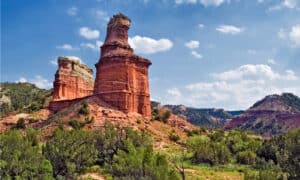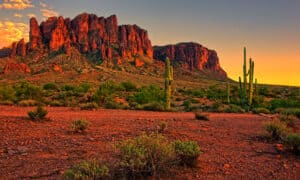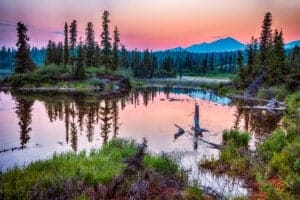Discover the 5 Best National Parks to Visit in Nevada
@media (min-width: 481px) {
.mobile-top-content {
display: none;
}
}
#mobileTopContentCTACarouselControls { overflow: hidden; text-overflow: ellipsis; white-space: nowrap; }
.mobile-top-content .more { color: #fff; }
.mobile-top-content a { color: #fff; text-decoration: underline; }
.mobile-top-content a:hover { color: #fff; text-decoration: underline; }
@media (max-width: 480px) {
.mobile-top-content {
background-color: #06a10b;
color: #fff;
text-align: center;
/*height: 60px;
padding-top:5px;*/
font-size:80%;
/* display: block; */
margin: 0px -30px;
}
}
Nevada is home to five of the great national parks that work to preserve the land of America. For years, these parks have protected desert plants, animal species, and landmarks significant to American history. A 2010 study by Environmental Pollution found that one of the greatest threats to this wildlife is fire and smoke damage.
1. Death Valley National Park
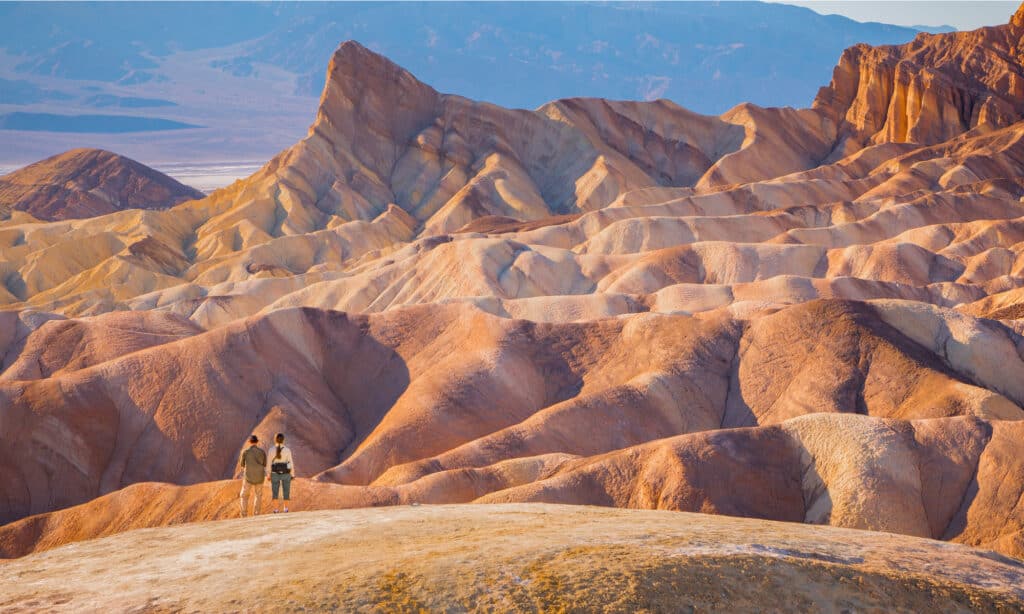
Dan Sedran/Shutterstock.com
| Death Valley National Park | |
|---|---|
| Size | 3,422,024 Acres |
| Animals to see | Jackrabbit |
| Attraction to see | Zabriskie Point |
Death Valley, a below-sea-level basin, has earned its name through its record of steady drought and extreme summer heat. There are a number of, what many would call, extreme climates throughout the land. Tall mountain peaks are covered with snow in the winter, while rare rainstorms surge through and bring about seemingly endless fields of wildflowers.
For those interested in breathtaking views, Zabriskie Point is noted as one of the most impressive attractions throughout all of Death Valley. Atop this mountain peak, you can see the intensity of the land. You can take note of the desert-like badlands and valleys below as you enjoy one of the most popular tourist sites in the entire park.
Lavish oases hold small fish species and provide refuge for the park’s wildlife, creating a vast and diverse ecosystem. You can find evidence of multiple species native to Death Valley along the trail. Desert bighorn sheep can be viewed climbing mountain slopes or trekking through the valleys. You may even come across jackrabbits, lizards, and tortoises.
2. Great Basin National Park
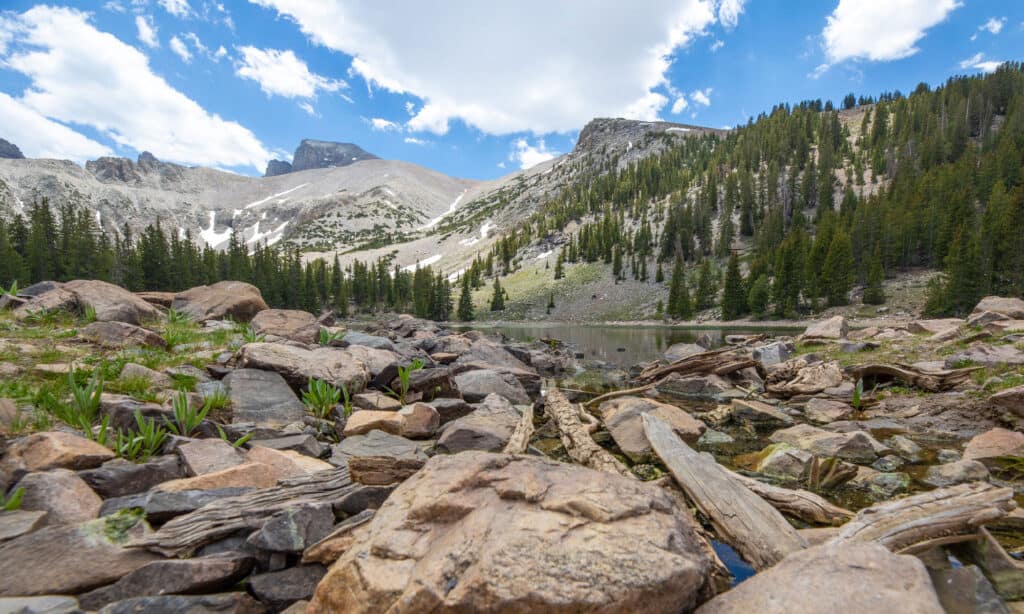
iStock.com/Allen Allnoch
| Great Basin National Park | |
|---|---|
| Size | 77,180 acres |
| Animals to see | Bighorn Sheep |
| Attraction to see | Great Basin Bristlecone Pines |
Great Basin National Park is known for its underground passages, tall peaks and summits, sage-covered foothills, and diverse families of animals. One of the most popular attractions to see is the Great Basin bristlecone pines, the oldest non-clonal species on the planet. These trees grow throughout the park, and many are thousands of years old. They grow in isolated groves below the tree line and are remarkable for their ability to survive numerous environmental and historical changes. There are three groves in the Great Basin that offer multiple levels of hiking difficulty and development: Wheeler Peak, Mount Washington, and Eagle Peak.
The Great Basin is home to a plethora of diverse animal species, including the yellow-bellied marmot, sagebrush vole, pygmy rabbit, bighorn sheep, and water shrew. When exploring this park, you are likely to see a few of these creatures enjoying life alongside the passageways and peaks.
3. Lake Mead National Recreation Area
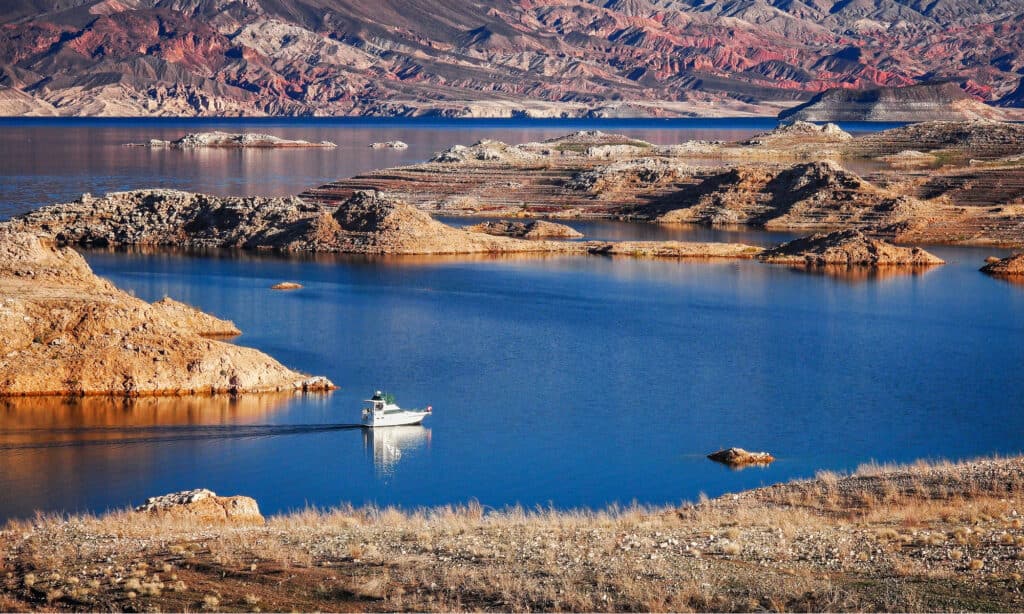
CrackerClips Stock Media/Shutterstock.com
| Lake Mead National Recreation Area | |
|---|---|
| Size | 1,495,806 Acres |
| Animals to see: | Desert Bighorn Sheep |
| Attraction to see | Hoover Dam |
Lake Mead holds the title of being the first and largest national recreation area in the United States of America. There are plenty of fun and exciting things to do at this national site, including hiking, camping, swimming, and fishing. The park is open all year and holds 1.5 million acres of land to explore, encompassing mountains, valleys, canyons, and lakes.
One of the most popular locations in the park is the famous Hoover Dam on Lake Mead, where many come to see the lake’s glistening waters from multiple viewing points. The Hoover Dam was built by the Roosevelt administration between 1931 and 1936. It is one of the most well-known outdoor attractions in the United States, and it was built by the government then.
Aside from the many fish species found in the never-ending waters of Lake Mead, multiple types of mammals reside on or travel through the park’s land. However, the mammals are not used to being around people. Sometimes, a lone desert bighorn sheep can be spotted atop one of the several peaks throughout the park. You might even come across coyotes, beavers, and rabbits.
4. Tule Springs Fossil Beds National Monument

Dominic Gentilcore PhD/Shutterstock.com
| Tule Springs Fossil Beds National Monument | |
|---|---|
| Size | 22,650 Acres |
| Animals to see | Aquatic Snails |
| Attraction to see | Las Vegas Bearpoppy |
The thousands of Pleistocene (Ice Age) fossils that tell stories of those who lived thousands of years ago are but a part of what makes the Tule Springs Fossil Beds National Monument so special. Over the last 570,000 years, the upper Las Vegas valley area has been transformed by water. The Tule Springs Fossil Beds are a product of that transformation and exist as evidence of land never seen by today’s human life.
The fossils preserved on this land were created between roughly 12,500 and 100,000 years ago. When visiting today, you are likely to get the chance to see a rare desert plant known as the Las Vegas bearpoppy and some of these Ice Age-era fossil bones.
While a majority of the prehistoric species that once roamed this land no longer exist, there are still several Pleistocene species that call this land home. While you cannot expect to find any Columbian mammoths or saber-toothed tigers along with the Tule Springs Fossil Beds, you will likely catch a glimpse of coyotes, jackrabbits, and possibly even some aquatic snails native to the land.
5. Pony Express National Historic Trail
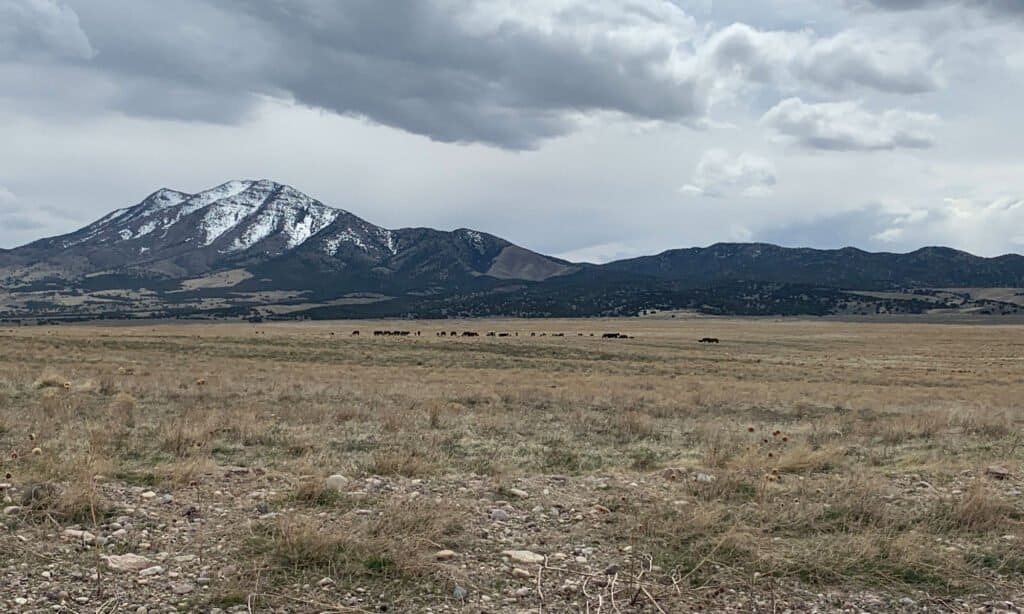
iStock.com/Trish Calhoun
| Pony Express National Historic Trail | |
|---|---|
| Size | 1,800-miles |
| Animals to see | Antelope |
| Attraction to see | Nevada Northern Railway Museum |
Beginning in Missouri and stretching to the state of California, the Pony Express National Historic Trail passes through eight states. It was once the most direct means of communication spanning East to West before the telegraph was invented. The Pony Express had become synonymous with the Old West era before electronic communications, making it one of the first and oldest communicative lines in U.S. history.
The Pony Express passes through multiple other historic sites and national parks, such as Great Basin National Park, Great Cliffs campground, Cave Lake State Park, Stillwater National Wildlife Refuge, etc. In Nevada, a former Stagecoach station named Ely can be found along the route of the Pony Express. This station is known for hosting restored steam and diesel trains at the Nevada Northern Railway Museum.
When adventuring along the great trails of the Pony Express, you may come across various forms of wildlife, such as common vultures and antelope. Though the desert-like terrain may suggest a lack of diverse wildlife, these creatures and others thrive in the desert land.
More from A-Z Animals
.more-snake-card-image { max-height:140px !important; }
@media (min-width: 481px) {
.mobile-top-content {
display: none;
}
}
#mobileTopContentCTACarouselControls { overflow: hidden; text-overflow: ellipsis; white-space: nowrap; }
.mobile-top-content .more { color: #fff; }
.mobile-top-content a { color: #fff; text-decoration: underline; }
.mobile-top-content a:hover { color: #fff; text-decoration: underline; }
@media (max-width: 480px) {
.mobile-top-content {
background-color: #06a10b;
color: #fff;
text-align: center;
/*height: 60px;
padding-top:5px;*/
font-size:80%;
/* display: block; */
margin: 0px -30px;
}
}
Nevada is home to five of the great national parks that work to preserve the land of America. For years, these parks have protected desert plants, animal species, and landmarks significant to American history. A 2010 study by Environmental Pollution found that one of the greatest threats to this wildlife is fire and smoke damage.
1. Death Valley National Park

Dan Sedran/Shutterstock.com
| Death Valley National Park | |
|---|---|
| Size | 3,422,024 Acres |
| Animals to see | Jackrabbit |
| Attraction to see | Zabriskie Point |
Death Valley, a below-sea-level basin, has earned its name through its record of steady drought and extreme summer heat. There are a number of, what many would call, extreme climates throughout the land. Tall mountain peaks are covered with snow in the winter, while rare rainstorms surge through and bring about seemingly endless fields of wildflowers.
For those interested in breathtaking views, Zabriskie Point is noted as one of the most impressive attractions throughout all of Death Valley. Atop this mountain peak, you can see the intensity of the land. You can take note of the desert-like badlands and valleys below as you enjoy one of the most popular tourist sites in the entire park.
Lavish oases hold small fish species and provide refuge for the park’s wildlife, creating a vast and diverse ecosystem. You can find evidence of multiple species native to Death Valley along the trail. Desert bighorn sheep can be viewed climbing mountain slopes or trekking through the valleys. You may even come across jackrabbits, lizards, and tortoises.
2. Great Basin National Park

iStock.com/Allen Allnoch
| Great Basin National Park | |
|---|---|
| Size | 77,180 acres |
| Animals to see | Bighorn Sheep |
| Attraction to see | Great Basin Bristlecone Pines |
Great Basin National Park is known for its underground passages, tall peaks and summits, sage-covered foothills, and diverse families of animals. One of the most popular attractions to see is the Great Basin bristlecone pines, the oldest non-clonal species on the planet. These trees grow throughout the park, and many are thousands of years old. They grow in isolated groves below the tree line and are remarkable for their ability to survive numerous environmental and historical changes. There are three groves in the Great Basin that offer multiple levels of hiking difficulty and development: Wheeler Peak, Mount Washington, and Eagle Peak.
The Great Basin is home to a plethora of diverse animal species, including the yellow-bellied marmot, sagebrush vole, pygmy rabbit, bighorn sheep, and water shrew. When exploring this park, you are likely to see a few of these creatures enjoying life alongside the passageways and peaks.
3. Lake Mead National Recreation Area

CrackerClips Stock Media/Shutterstock.com
| Lake Mead National Recreation Area | |
|---|---|
| Size | 1,495,806 Acres |
| Animals to see: | Desert Bighorn Sheep |
| Attraction to see | Hoover Dam |
Lake Mead holds the title of being the first and largest national recreation area in the United States of America. There are plenty of fun and exciting things to do at this national site, including hiking, camping, swimming, and fishing. The park is open all year and holds 1.5 million acres of land to explore, encompassing mountains, valleys, canyons, and lakes.
One of the most popular locations in the park is the famous Hoover Dam on Lake Mead, where many come to see the lake’s glistening waters from multiple viewing points. The Hoover Dam was built by the Roosevelt administration between 1931 and 1936. It is one of the most well-known outdoor attractions in the United States, and it was built by the government then.
Aside from the many fish species found in the never-ending waters of Lake Mead, multiple types of mammals reside on or travel through the park’s land. However, the mammals are not used to being around people. Sometimes, a lone desert bighorn sheep can be spotted atop one of the several peaks throughout the park. You might even come across coyotes, beavers, and rabbits.
4. Tule Springs Fossil Beds National Monument

Dominic Gentilcore PhD/Shutterstock.com
| Tule Springs Fossil Beds National Monument | |
|---|---|
| Size | 22,650 Acres |
| Animals to see | Aquatic Snails |
| Attraction to see | Las Vegas Bearpoppy |
The thousands of Pleistocene (Ice Age) fossils that tell stories of those who lived thousands of years ago are but a part of what makes the Tule Springs Fossil Beds National Monument so special. Over the last 570,000 years, the upper Las Vegas valley area has been transformed by water. The Tule Springs Fossil Beds are a product of that transformation and exist as evidence of land never seen by today’s human life.
The fossils preserved on this land were created between roughly 12,500 and 100,000 years ago. When visiting today, you are likely to get the chance to see a rare desert plant known as the Las Vegas bearpoppy and some of these Ice Age-era fossil bones.
While a majority of the prehistoric species that once roamed this land no longer exist, there are still several Pleistocene species that call this land home. While you cannot expect to find any Columbian mammoths or saber-toothed tigers along with the Tule Springs Fossil Beds, you will likely catch a glimpse of coyotes, jackrabbits, and possibly even some aquatic snails native to the land.
5. Pony Express National Historic Trail

iStock.com/Trish Calhoun
| Pony Express National Historic Trail | |
|---|---|
| Size | 1,800-miles |
| Animals to see | Antelope |
| Attraction to see | Nevada Northern Railway Museum |
Beginning in Missouri and stretching to the state of California, the Pony Express National Historic Trail passes through eight states. It was once the most direct means of communication spanning East to West before the telegraph was invented. The Pony Express had become synonymous with the Old West era before electronic communications, making it one of the first and oldest communicative lines in U.S. history.
The Pony Express passes through multiple other historic sites and national parks, such as Great Basin National Park, Great Cliffs campground, Cave Lake State Park, Stillwater National Wildlife Refuge, etc. In Nevada, a former Stagecoach station named Ely can be found along the route of the Pony Express. This station is known for hosting restored steam and diesel trains at the Nevada Northern Railway Museum.
When adventuring along the great trails of the Pony Express, you may come across various forms of wildlife, such as common vultures and antelope. Though the desert-like terrain may suggest a lack of diverse wildlife, these creatures and others thrive in the desert land.



